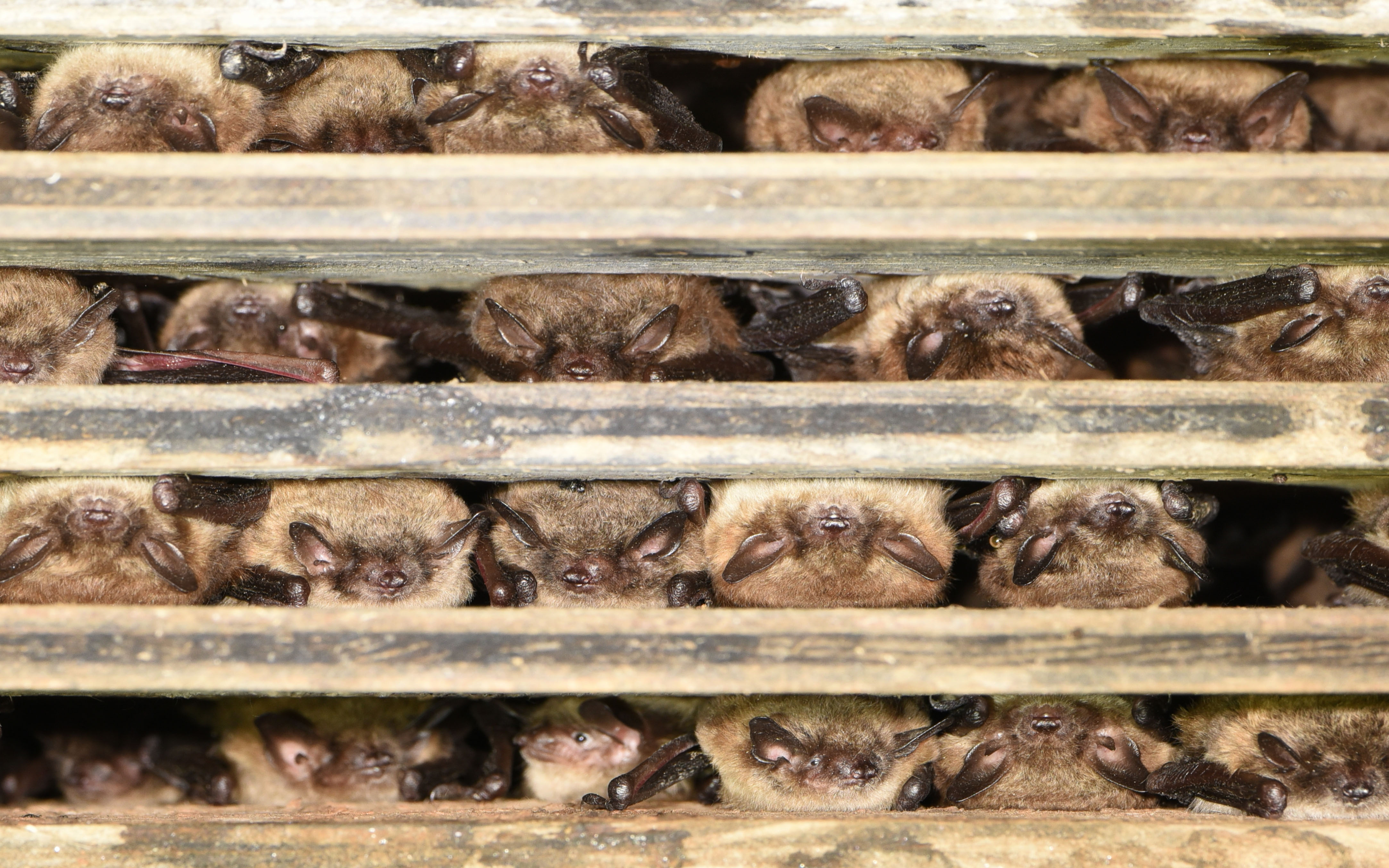
Living in harmony, side-by-side with wildlife can provide one of the most interesting, enjoyable, and educational ways to interact with the natural world. And catering to backyard bats is no exception. Plus, bats provide measurable benefits as organic pest control providers. From our backyard gardens, to our natural parks, and even among commercial agriculture and ranching interests, bats perform these essential insect-control services, every summer night, at no cost, under the cover of darkness.
Almost all of the 47 species of bats in the U.S. and Canada eat insects. Each night they may eat up to their body weight in nocturnal pests! Of those, nearly half may roost in specially-designed, man-made “bat houses.” Because many bats are losing their traditional roosts in old growth forests, caves, and the man-made structures they’ve turned to as refuges of last resort, “bat houses” have emerged as important conservation and management tools.
Because bats are mostly silent to us, and fly largely unobserved at night, their contributions to a healthy environment have largely gone unnoticed. Since 1990 BCM has studied the secret world of bats and is sharing the knowledge to foster healthy bat populations before they disappear. Bat houses are one tool to keep our “masters of the night skies” not only common, but also prosperous.
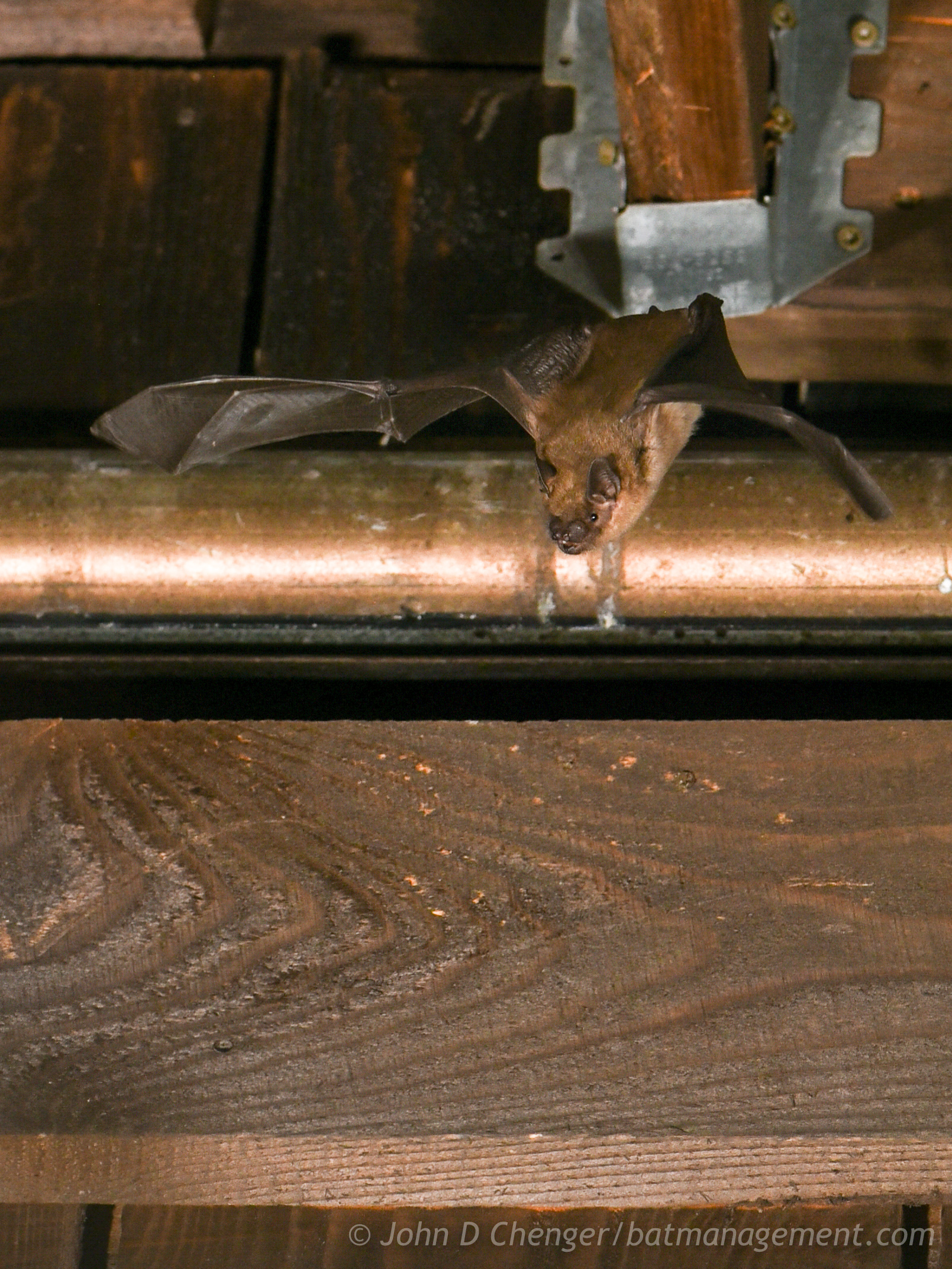
Back in the early 1980s, it became apparent there was a problem with bats roosting in buildings, especially attics. There were real problems as homes & other structures were being remodeled & made more energy efficient. Bats were being evicted with not so nice methods, including pesticides that could be harmful to residents, fairly cruel traps, and even using truck exhaust piping into attics to kill bats.
Those who used recommended methods, by sealing entrances when bats were gone to hibernation sites, or using one-way doors to allow exits but deter reentering, created problems for neighbors as bats moved into adjacent sites.
That sparked research in Pennsylvania on providing alternate roosts for when bats are evicted from buildings. Over the years bat house designs and their placement improved and became highly successful. As successful artificial roosts demonstrated their practicality, their use naturally migrated to creation of management areas for bats.
Well designed and well placed houses now provide win-win goals by providing relatively safe roosts for bats, minimizing bat human conflicts, and avoiding colony annihilation in buildings.
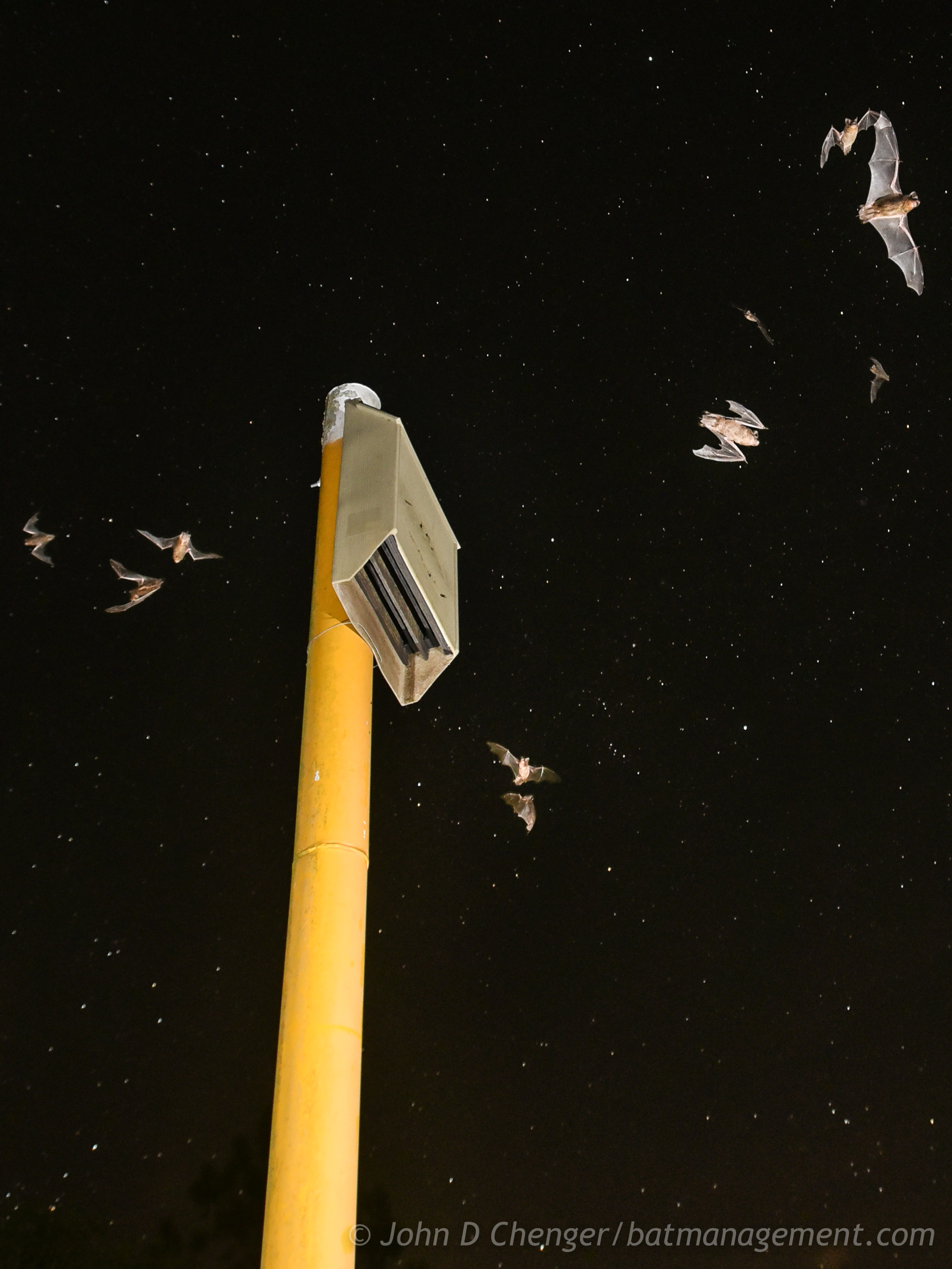
There are two main types of bat houses: a simple “crevice” house with baffles to provide roost spaces; and a “rocket box” style house that offers various angled and vertical crevices around a post that mimics the “bark roost” of old growth trees. No matter the type, bat houses provide excellent alternate housing, especially in roost-limited areas where bats have lost traditional homes in old growth hollow trees, cavities, buildings, bridges, caves, and even abandoned hard rock mines.
Bat houses are a low-maintenance way to attract and benefit from the prodigious insect-eating activities of the many U.S. and Canadian bat species. They are usually open at the bottom so guano falls to the ground and doesn't require cleaning. Wood based bat houses should always be painted to help keep the structure “air tight” and to prevent excessive weathering. BCM's modern bat houses have exterior shells made out of UV-resistant plastic, a design that makes bat houses virtually maintenance-free. In all bat houses the interior roosting spaces should be roughened to provide secure toe-holds for roosting bats.
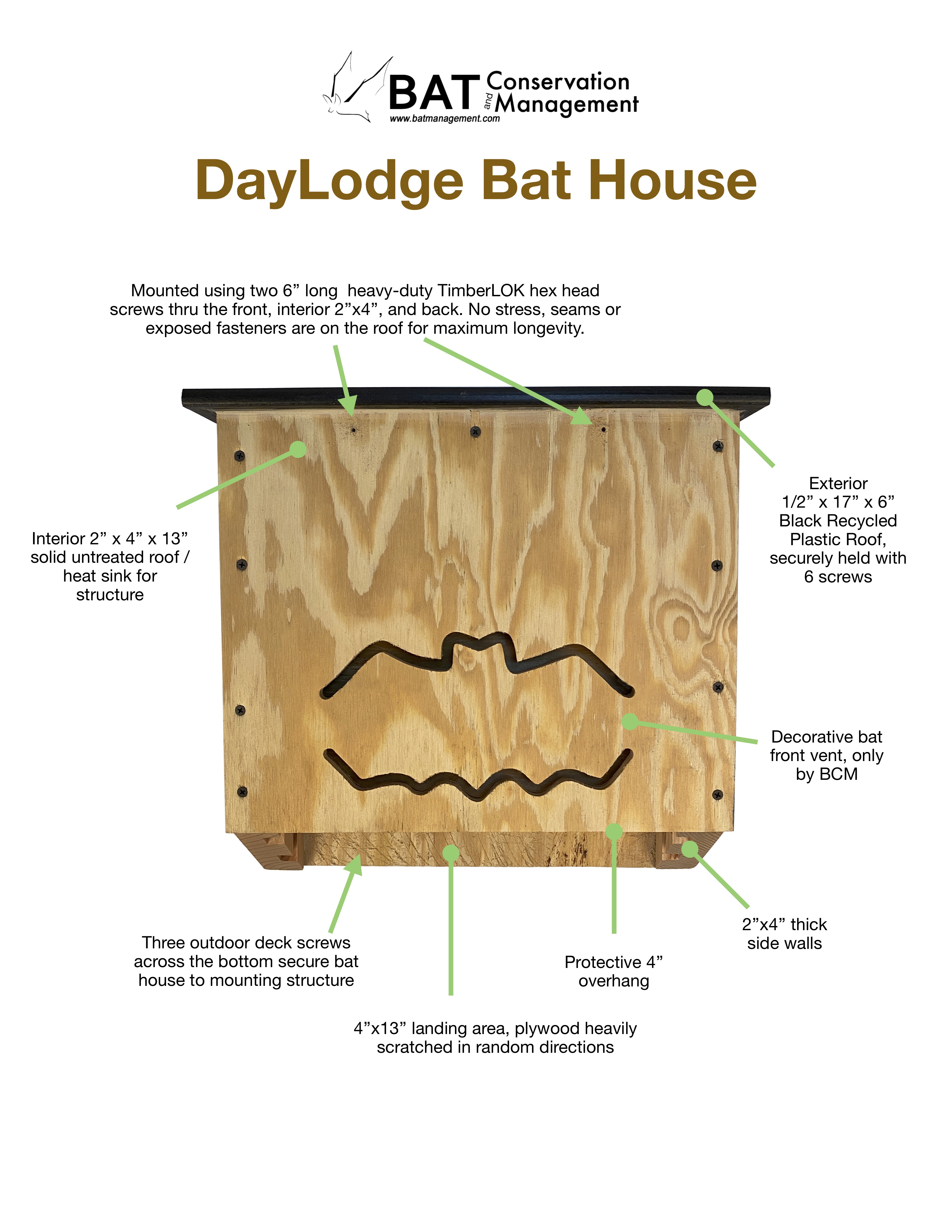
BCM bat houses are designed and constructed specifically to collect and trap heat to meet key bat roosting needs. A relatively wide, airtight roof is an important solar heat collector. The bat house is tall with ventilation slots 1/3rd from the bottom to create an attractive interior temperature gradient. A landing pad provides a large easy target for bats on approach and recessed baffles form an overhang for some protection. Crevice dimensions average between a snuggly 3/4”, 7/8’’ and 1.5’’ depending on the model bat house, and certain models such as the ColonyLodge and Super Rocket Roost include more than one size. This spacing preferred by most common house bats in the U.S. and Canada. Hand roughened interior surfaces are in random directions providing a safe, permanent gripping texture for bats, especially newborn pups. UV resistant plastic exteriors and/or roofs extend the life of the bat house by protecting against sun, water, snow, and ice. All joints are heavily glued during assembly to help the bat house trap heat, and parts are fastened together with screws for longest life. BCM designers take all these points seriously when constructing bat houses, and so should you if assembling a DIY kit.
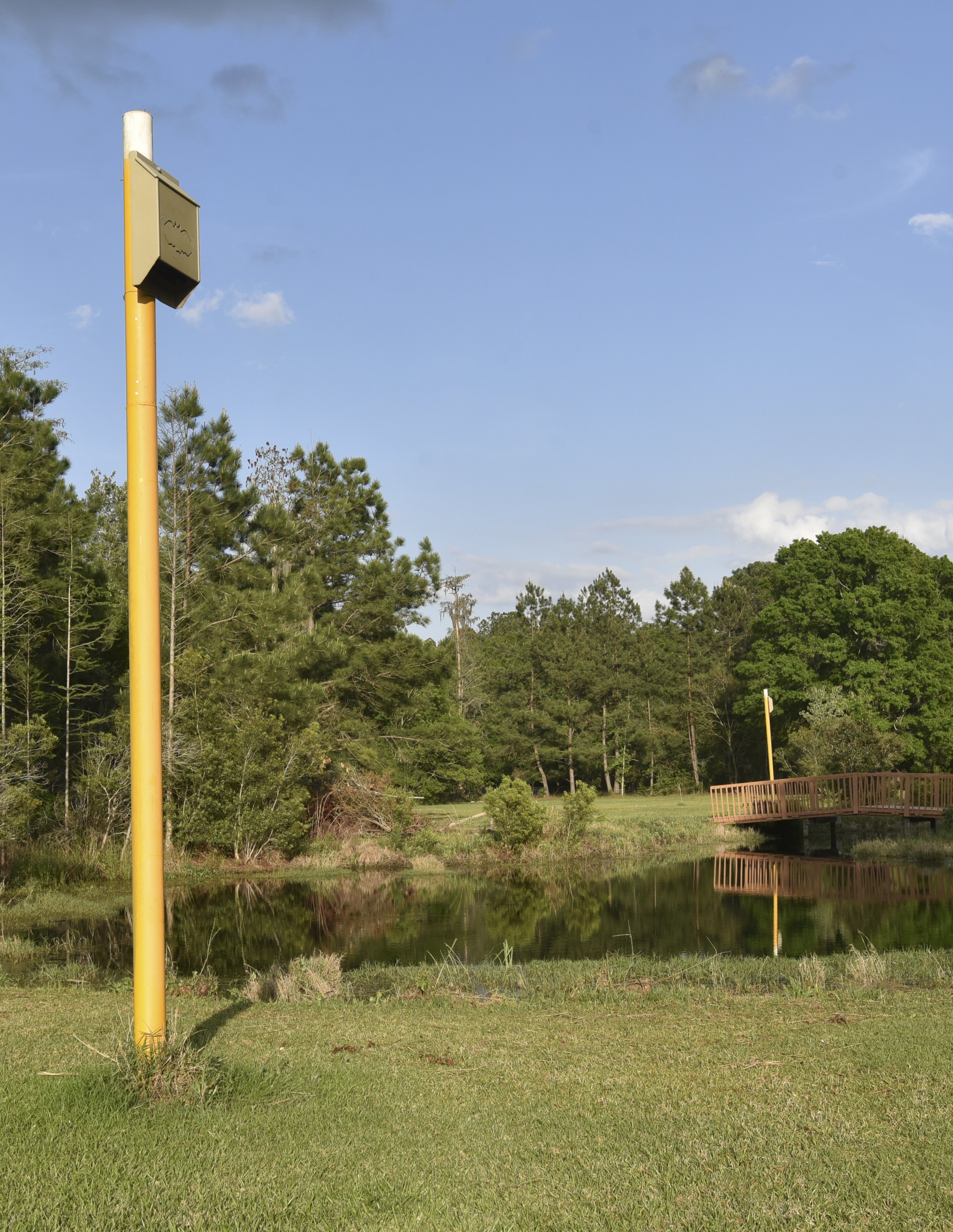
Bat houses are most successful when they are installed near existing building roosts, especially if bats are being excluded from those roosts during a remodel or reconstruction. All bats will not voluntarily leave a building roost to move into a bat house, but if the house is available on-site prior to bats being systematically sealed out of their building roost, chances are high that they will be more than happy to move into the bat house.
Your bat house can be installed on an existing building, but only after carefully assessing the amount of daily solar exposure at the site. Most often the best solution is to mount the bat house on a post located in a sunny spot on the property, or perhaps the sunny side of an appropriate building. To securely attach the box to a wood post or wall, a specially designed Mount Kit is available from BCM which includes bolts or screws appropriate for your intended location. Your BCM bat house is modular; we have kits and DIY suggestions on expanding your colony when the time comes using the same 4’’x6’’ post you started with. But, before rushing out to install your new bat house, take a few moments to consider: (1) the best location on your property for your new tenants, and (2) once installed, it is unlikely that you will want to un-install your house to tweak its look or improve its weather-resistance. Read on to learn more about locating and putting key finishing touches on your bat house.
Backyard Bat Houses
Learn the differences between our base bat houses suitable for starting backyard bat colonies.
Siting and Color
Consider the options on where to locate your bat house so it's good for bats and -for you-.
Installing a Bat House
Trees, buildings, or poles?
Installing a bat house on something high can be a job, here are suggestions on how to move it along.
Maintaining a Bat House
Our bat houses are low maintainance, but there are some long term situations to be aware of.
Human Health Concerns
Bats attract more than their fair share of negative press, here are some facts to help prospective bat landlords rest easier.
Can my bat house be too hot?
Advice from real-world experts on how to recognize when is too hot, when to be concerned, and how to mitigate.
BCM's President John Chenger partnered with Merlin Tuttle's Bat Conservation to create this video, drawing from Merlin's unparalleled first-hand experiance with bat conservation worldwide.

